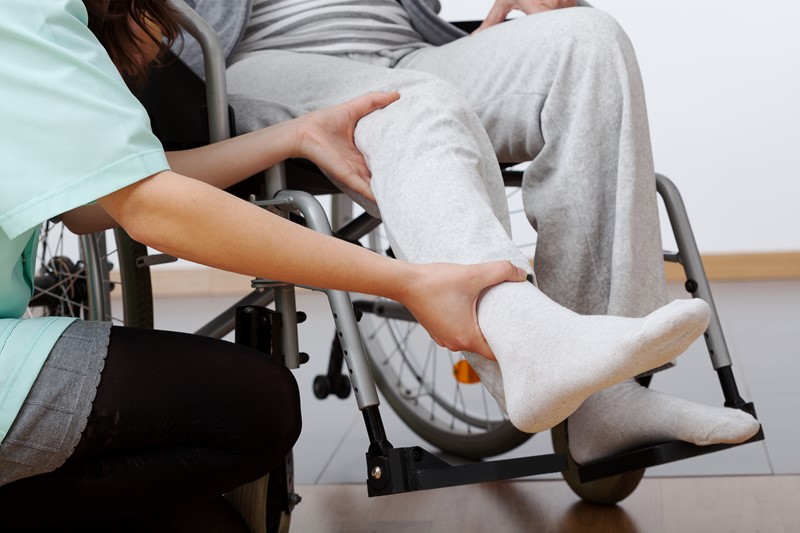Transitioning patients from one care setting to another, or back to the comfort of their own homes, are essential steps for any patient that at times can have a problematic healthcare journey. Transition Coordinators, Discharge Planners, Nurse Navigators, and Case Managers all manage these transitions. These roles have emerged from the transition coordinator functions, where utilisation and risk reviews were being performed without relationship to the care, coordination, and communication required for optimal, ongoing delivery of patient care. Providers and multi-interdisciplinary care team members need this coordination and transfer of knowledge, so they have a rounded understanding to provide ongoing care for their patients at each transition intersection.
These transition roles have evolved to blend utilisation management, transition and discharge planning, risk evaluations and documentation improvements, education, and communication of planned treatment and aftercare. This information can now be shared across the care continuum within and between the patient’s care, team – including acute, ambulatory and community care providers, plus the patient and their caregivers. The person in the transition role acts as the patient’s supporter, but also has a focus on enabling providers (the care team).
Many of the community-based transition in care roles are fulfilled by registered nurses such as Clayton Brown who serves as a local care coordinator (LCC). He is supported in this role by a regional care coordinator, utilising a centralised data system. Clayton’s primary focus is to identify and actively engage high-need, high-risk (cost) patients and link them with a nominated primary care provider (PCP) and community-based services. Clayton’s performance as an LCC is measured by the number, type and acuity of the patient and provider interactions he initiates – from when the patient is first identified – for the next 30 – 60-day period.
Clayton’s role in establishing connections for high-need patients could be as simple as enabling the exchange of information between the patient’s care providers, to accomplish a successful transition from one care environment to another. These could be transitions between acute, long-term care, nursing facility, rehabilitation, home healthcare, as well as discharges to home with follow-up by primary care or specialty care provider(s). Another important but sometimes forgotten communication is the sharing of information from providers to the patients (or caregivers), to support the needs of the patient during and after these transitions.
The importance of effective transitions of care
It is essential to plan for effective transitional care for patients from the hospital to their home. Transitions of care have been defined as a passage from one life phase, or condition, to another and one healthcare environment to another. Effective transitions of care are essential to avoid or reduce hospital readmissions. Contributing factors that can lead to avoidable hospital readmissions can include:
- Poor communication among care providers.
- The failure to follow-up with healthcare providers.
- Inadequate medication reconciliation.
- The lack of knowledge regarding risk modification.
Preventing or reducing avoidable hospital admissions is vital to improving the quality of life for the patient and contains costs for our healthcare systems.
Measurable benefits from having coordinated care during transitions
In the U.S. and other countries, hospitals can be provided with bonuses or penalties depending on the quality of care that their care teams deliver. Hospital management understands that the difference between getting more or less from these payments will depend on how well a team performs, but they might not realise that perhaps the most critical team members in improving quality and patient experience are transition managers.
Transition managers play such an essential role in hospitals, ambulatory and other health settings that they are almost becoming the interpreters (face) of care. There are many clinicians and providers involved with delivering patient care, but only a few of these people are responsible for ensuring that patient care is delivered appropriately to every patient in a standard way, and that the hospital gets reimbursed if these patients remain ‘out of hospital’. Only transition managers are responsible for both essential functions, firstly enhancing a coordinated approach to improve the patient’s clinical and social outcomes, and secondly decreasing the risk of adverse events occurring as they help the patient become more engaged in their healthcare. As a result, transition managers are making significant contributions to the bottom line for their organisations.
How do transition managers communicate with providers?
Transition managers are excellent communicators, and their role is about connecting providers for the benefit of the patient. The content of any transition communication is only as good as its source and completeness. Different transition scenarios require different types of information. For example, a transition from inpatient to ambulatory care may require an in-home assessment, education, a discharge summary, and a medication prescription. A transition from a primary care provider to a specialist may also need a referral summary. All of these communications should originate from the patient’s clinical record with a standard set of data that can be communicated. In all cases, transition communications should support existing workflows, and should avoid overloading the clinical recipients. However, ultimately, the patient and caregivers’ information and understanding have to be considered because it is the patient (and or their legal representative) and providers that are the recipients of any ongoing care information.
How is this information exchanged?
The exchange of ‘summaries of information’ can be challenging, as a single standard format for all transfers of care does not support various requirements for the required data elements of different stakeholders, and different transition circumstances. The current requirements that these all be communicated in either the CCD or CCR file format may exclude data not supported by those standards. On the other hand, the use of a variety of formats for each different type of transition communication would make it extremely difficult for systems to exchange and communicate the necessary data and significantly delay deploying these capabilities.
However, we do know enabling the delivery of a standardised patient ‘summary’ provides timely, correct, and structured information for the next point-of-care as well as offering enhanced information to the patient. Understanding the need for accuracy, appropriateness, an amount (the data required to deliver the ongoing care without data overload) of information will ensure that the care team provides high-quality care and patients become more involved and informed. Enhancing a patient’s ability to ask questions and make well-informed decisions about their health can be supported by the patient having access to the right information to enable a rounded patient-centric approach that empowers the patient.
An example of an effective patient transition of care
A patient is discharged from a hospital or an emergency department, and the discharge instructions are handed to the patient by the discharging doctor – as the patient walks out of the ward. The instructions may be generic, patient-specific or disease-specific depending on the facility’s practices and the patient’s needs. The patient acknowledges that they have received the ‘summary’ document – verbally, in writing or electronically. The acknowledgement triggers the electronic medical/physical discharge sequence of events. The ‘summary’ (which includes the discharge instructions) is automatically sent electronically to the patient’s PCP or care team. The ‘summary’ may arrive in the PCP’s EHR system even before the patient has left the hospital. A copy of the ‘summary’ is also retained in the hospital EHR for future reference.
How does technology enable an effective patient transition of care?
Technology becomes the enabler for effective transitions of care, by providing a real-time transfer of knowledge. It can be viewed and updated by all involved with the patient. Orion Health Coordinate, utilising the Transition of Care pathway can enable a personalised approach to individual patient care by providing a predictable and optimised collection of information that supports workflows to manage and track the delivery of different models of care. Orion Health Coordinate can power effective care coordination across multiple care settings, and it can be implemented across numerous hospitals, healthcare facilities and out into the community to connect all the stakeholders in a patient’s circle of care.
The Transition of Care pathway can help to lower or avert avoidable hospital readmissions by focusing on patients who have a chronic illness, or elderly patients who have a high-risk of hospital readmission. With the right planning and care, hospital readmissions within two weeks of an identified high-risk patient being discharged can be avoided. As Transition Managers identify and enrol these patients on the Transition of Care pathway, appointments can be followed up with the PCP, Social Services and the community Pharmacist, to ensure they have the resources required to enable the best outcome.
Orion Health Coordinate , which can empower cross-community collaboration and coordination, and the Care Pathways standardise the collection of the right information and enable delivery of care for entire population cohorts while maintaining a personalised approach to each patient.



